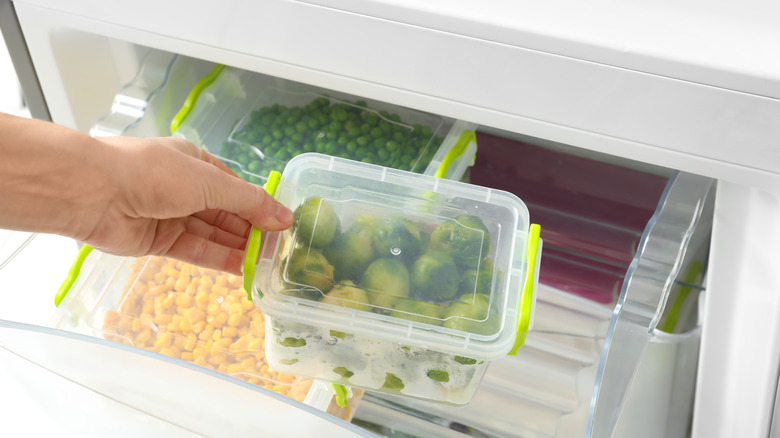How To Clean Brussels Sprouts (When They're Extra Dirty Or Freshly Bought)
Unsurprisingly, many veggies require different methods of cleaning. Leeks, for instance, should be cut both lengthwise and crosswise, so the sand caught between the veggie's layers can be rinsed away more effectively. On the other hand, tomatoes need only a quick rinse and stem removal. Though they may seem about as difficult to clean as leeks, Brussels sprouts actually fall somewhere in between leeks and tomatoes on the cleaning spectrum. All you need to do is trim the Brussels sprouts' stems and remove any damaged outer leaves, then rinse under cool water. You can then leave the sprouts to drain in a colander and/or pat them dry.
Because Brussels sprouts grow on stalks and not in or on the ground, they shouldn't be too dirty to begin with, and definitely shouldn't be so dirty that you need to soak them and risk losing their crispy texture. Just like that, you can master Brussels sprouts – or at least the cleaning process.
Here's how to clean Brussels sprouts for storage
As is the case when prepping vegetables of any kind, you want to be sure to store your Brussels sprouts properly. If you've bought your sprouts still on the stalk, refrain from removing them until you're ready to use them, as this helps maintain freshness. If you've bought your sprouts already loose in a bag, remove any damaged or discolored leaves.
Just as you should never wash lettuce ahead of time, the same rule applies to Brussels sprouts. You should also avoid trimming or cutting sprouts in advance, as the edges can wilt or turn brown. Instead, once you've removed any sprouts or leaves that don't meet your satisfaction, store them in an airtight container – ideally in your refrigerator's crisper drawer.
In these conditions, Brussels sprouts maintain peak quality for a few days, but can remain in the fridge for up to a week without spoiling. If you need to keep Brussels sprouts around longer than that, they should be stored in the freezer.

